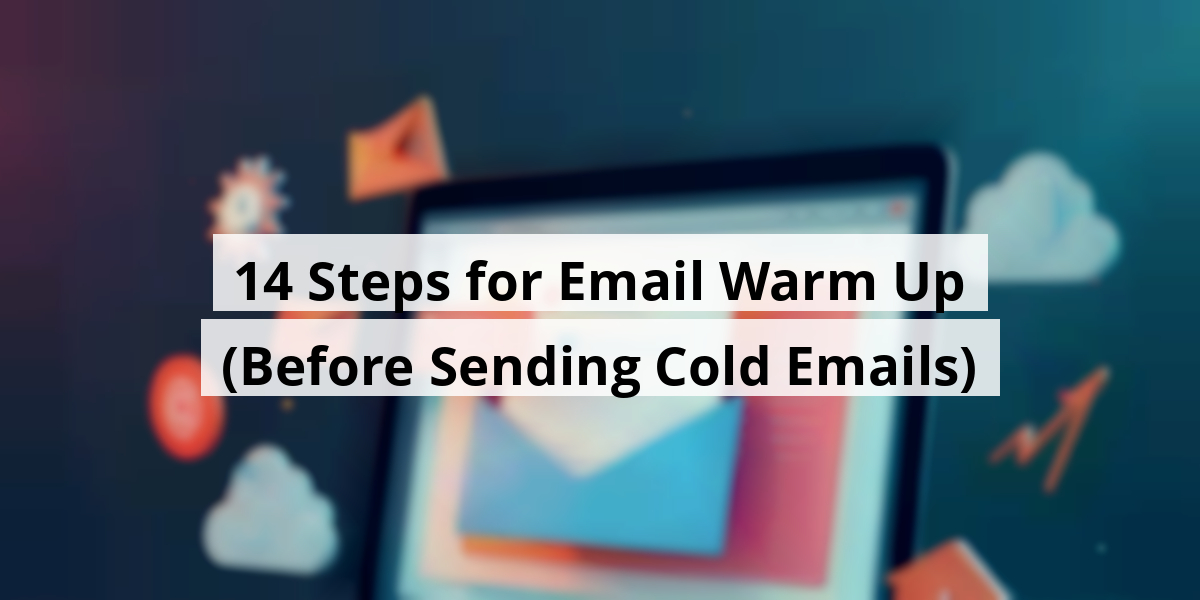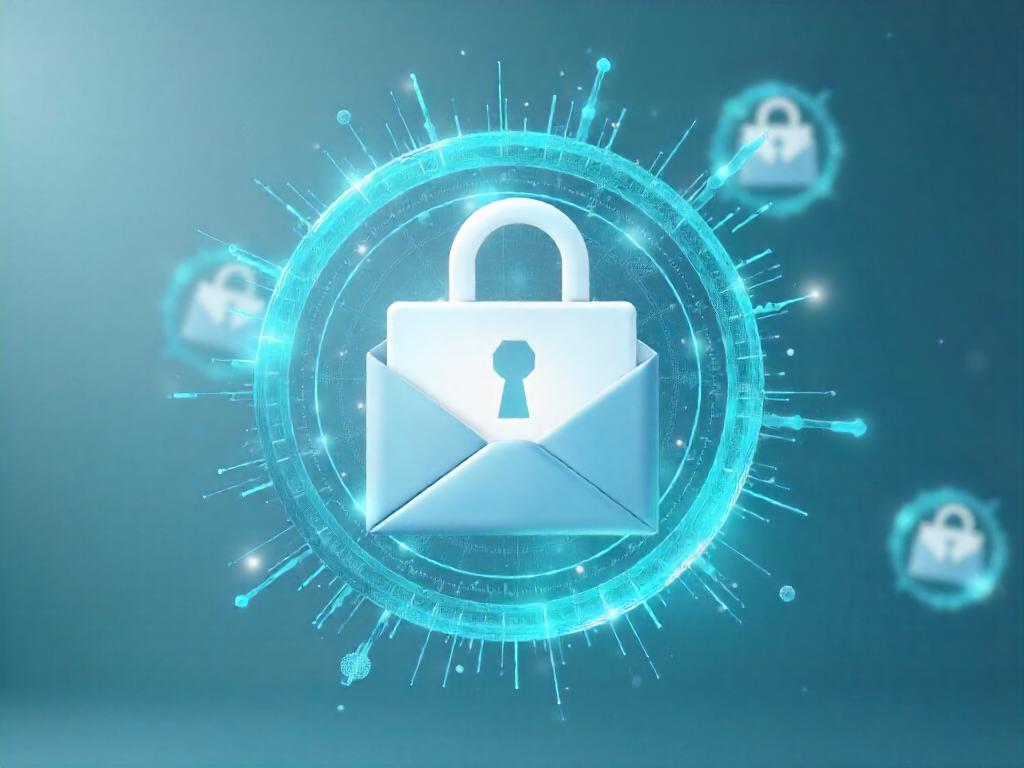 LIMITED SPOTS
All plans are 30% OFF for the first month! with the code WELCOME303
LIMITED SPOTS
All plans are 30% OFF for the first month! with the code WELCOME303

 LIMITED SPOTS
All plans are 30% OFF for the first month! with the code WELCOME303
LIMITED SPOTS
All plans are 30% OFF for the first month! with the code WELCOME303


Now, we are going to talk about the essentials of warming up your email. It’s almost like preparing your friends for a surprise party—the anticipation builds, and you don't want to scare them away with too much at once!
Email warm-up is akin to stretching before a big run. Imagine sending emails straight into the deep black hole of spam folders! Not a great place for important messages, right? This process helps ensure our emails land in the primary inbox instead. We start by ramping up our sending volume slowly and steadily. Think of it as adding just a sprinkle of seasoning to a pot of soup—too much too fast can ruin the whole thing. Daily, our email domain needs to see some love. We’re talking about good old-fashioned engagement! This means:
But here's the kicker: it can sometimes feel like pulling teeth to get those positive interactions. We've all been there—sending emails into the void and wondering if anyone even reads them anymore. It's like shouting into a canyon and waiting for a reply!
However, don’t throw in the towel just yet. By utilizing some handy email warm-up tools, we can see a noticeable uptick in interactions, which *surprise* helps build our reputation as a sender. It’s like gaining a reputation as the friend who's always on time—you start getting more invites!Looking to spice up your sales email game? Let's not forget the importance of a solid technical email setup. It’s like making sure your party venue is clean before the guests arrive—it sets the stage for everything that follows!
Remember, it’s a bit of a balancing act. Start slow, keep it engaging, and before we know it, we’ll have a vibrant email ecosystem buzzing with activity. Just like we wouldn’t want our bread to rise too fast and collapse (thank you, sourdough trauma from last year), we should give our emails the time they need to warm up! So, let’s put some thought into our warm-up strategies, because a strong email reputation might just turn those casual conversation starters into top-notch leads. After all, everyone loves a good conversation starter!Now we are going to talk about getting a handle on email outreach during those crucial first few weeks. It can be a wild ride, but with some thoughtful planning, we can make it a smoother experience and hopefully rack up some positive responses.


So, picture this: a marketing team launches into an email campaign like it’s Black Friday. They shoot out a flood of emails, thinking they’ll drum up interest faster than a cat chasing a laser pointer. Spoiler alert: it usually backfires. One common rookie mistake? Hitting that daily restriction on email blasts hard. Let’s say it’s 150 emails a day—bam! They just crank it up and blast out thousands of emails right off the bat. Suddenly, the email providers are raising eyebrows, thinking, "I smell spam!" Next thing you know, those emails are not just landing in spam folders—they're getting taken out like trash.
To keep our email accounts from looking suspicious, we need to strategize our sending limits. Imagine it like baby steps instead of a marathon. We call it “email throttling.” Here’s a quick rundown of the basics for those first few weeks:
Now, don’t panic about the planning. The good news? We’ve got a handy-dandy spreadsheet that works like a charm. Just plug in how many emails you want to send, and it'll work out your throttling rates as if they were your trusty pocket calculator.
For those wanting the quick route:
Fast Throttling is perfect for when you've got a new team member on an email domain that already shines in the inbox arena.
Medium Throttling? That’s a good fit when you’re starting a new outreach initiative on a domain that already has some email experience, like a talented intern.
Slow Throttling is for those who are just dipping their toes into cold outreach, or, dare we say, using a brand-new domain. Think of it like a shy kid at a dance—no need to rush in.
All in all, patience and planning really do pay off. Mistakes happen, but with a little foresight, we can keep our email outreach sailing smoothly without ending up in spam purgatory!
Now we are going to talk about a nifty little strategy that can boost our email game: using a warm-up tool. Trust us; it’s like giving a high-five to our inbox before we start sending important stuff out!

So, here’s the scoop: using an email warm-up tool can perk up the positive engagement for our email domain. How does this magic work, you ask? These tools simulate replies, mark our emails as important, and do other fancy stuff that gives email providers the warm fuzzies about us.
Just to clear the air, these tools chat amongst themselves—sending emails and creating warm interactions within their own network, not your potential customers. Think of it as a secret club where members give each other compliments to boost their reputation. This network action gives our sender reputation a little boost, ensuring our emails have a greater chance of landing in that coveted inbox rather than the dreaded spam folder.
Take Allegrow, for example. This tool’s been a go-to for everyone from fresh startups to big-name companies. Sure, we might be slightly partial to it, but hey, everybody loves a good hot tub! We’ll dive into what makes an effective warm-up tool later, so stay tuned.
More companies are turning to warm-up tools to keep open and reply rates high during their cold outreach. It’s basically the not-so-hidden treasure map to better engagement. But here’s the kicker: warm-up tools won’t magically sprinkle fairy dust over our email marketing strategy. For real, there are 14 steps, not one, to prepare our email game. Think of it like prepping for a marathon, not just showing up at the finish line! 🏃♂️
If we’re scratching our heads wondering if we need a warm-up tool, here are a few questions to ponder:
| Warm-Up Tool Benefits | Why They're Essential |
|---|---|
| Simulates replies | Builds credibility |
| Marks emails as important | Improves open rates |
| Engagement within the network | Boosts sender reputation |
| Streamlined cold outreach | Saves time and increases response |
Now we are going to talk about how to keep our emails on the straight and narrow when it comes to trustworthiness. Let’s unravel the importance of DKIM, SPF, and DMARC—three acronyms that have the potential to change the way we communicate via email.
Ever noticed how certain emails always land in your spam folder? Sometimes it’s merely an unfortunate case of mistaken identity. This boils down to established protocols, like DKIM, SPF, and DMARC, that determine how trustworthy an email is. Think of them as the VIP badges for the email club.
Imagine sending out an important proposal, only for it to be held up in the clutches of a spam filter. Yikes! The right email authentication methods are essential, and it's like needing a legitimate driver's license before you can hit the road. No one wants to be the rogue driver who gets pulled over!
Before tossing any prospecting emails into the vast email abyss, it’s crucial to ensure all three protocols are properly set up. For those in the Google Workspace universe, you can run a quick examination of your domain’s authentication status for free. Fingers crossed, you see results that are as clean as a whistle!
If you're more of a Microsoft Outlook kind of person, fear not! There are tools like MXToolbox that help you verify DMARC, SPF, and DKIM settings easily. Think of it as your email’s version of a health check-up.
Developing a good relationship with these protocols can be the difference between having your emails received like a warm hug or a cold shoulder. Especially in the B2B sphere, many firms have stricter filters in place, and without all three cute little acronyms in check, your messages might not bubble up at all.
So where’s the starting line? Begin with SPF. Check the essentials for setting up SPF records here. Next, pop into your email provider’s admin panel to generate and add a DKIM record. Once you have SPF and DKIM squared away, you can define and implement your DMARC policy.
Embracing these protocols isn’t just a passing trend; it's the foundation for successful email communication. It’s like giving your emails a much-needed facelift, ensuring they stand out for all the right reasons!
Now we are going to talk about the importance of using top-notch contact data. Think of it like picking the right ingredients for a gourmet meal. You want the best to avoid a kitchen disaster, right? In the same way, having reliable contact information can be the difference between hitting the bullseye and missing the target completely.


When we aim for the right prospects at ideal companies, avoiding those pesky bounces is crucial for keeping our sender reputation squeaky clean. Relying on a reliable contact data provider can make all the difference. If we’re feeling lost on where to begin—or how our current resource measures up—here's a cheat sheet of some solid contenders:
Let’s face it—most providers check their data set every three months. So, it’s essential for us to make sure the information is current before reaching out to any prospects. After all, we wouldn’t want to accidentally invite a “ghost” to our networking event, right?
In a world where information changes faster than a cat can knock over a houseplant, having high-quality contacts can help us stay ahead of the curve. It’s about ensuring our outreach is effective and our chances of success remain high.
So next time we scan our contact list, let’s treat it like a chef choosing fresh produce at the market. The better the ingredients, the better the dish—or in this case, the relationship. High-quality contacts lead to valuable conversations, and who knows, they might even turn into lasting partnerships. Let's keep our lists fresh and full of potential!
Now we're going to chat about keeping those pesky bounces at bay in our email campaigns. We all know that bounces are like that awkward guest who shows up uninvited to the party, right? And let’s be honest—nobody likes getting flagged for being spammy. So, we’ll share some simple tips to make sure our emails land where they’re supposed to without the headaches.
We all get that moment when our perfectly crafted emails hit the wall. Bouncing emails can feel like sending out invitations and having them all come back marked “return to sender.” It happens to everyone, even the pros! But here’s a kicker: high bounce rates can turn email providers against us, thinking we're just a spam factory. The magic number? Keep that bounce rate below one percent. Sounds tough? Not when you have a plan!
Let’s break it down into three straightforward steps:
So, there we have it! A little bit of humor, a sprinkle of wisdom, and a dash of real-world application. By keeping our lists clean, we can wave goodbye to those bounce rates and pave the way for better email engagement. Ready to turn those frowns upside down? We're on this journey together! 😊
Now we're going to discuss how to create captivating email content that doesn’t end up in the spam abyss.

Imagine pouring your heart into an email, only for it to vanish into cyberspace as if it never existed. Devastating, right? That's why crafting captivating content is crucial. It’s like trying to make a soufflé; you can’t rush it, or it’ll collapse. Take a digital shortcut with AI tools if you’re pressed for time. It's like having a sous chef who knows the recipe perfectly, saving you from culinary calamities. While there’s no magic potion for delightful content, we can share our secret sauce for improving email engagement. Here's how to cook up some scrumptious email content:
| Best Practices | Tips |
|---|---|
| Relevance | Reference something recent or personal. |
| Length | Keep it short to maintain interest. |
| Subject line | Boring can be more engaging. |
| Size/Attachments | Avoid attachments to prevent spam filtering. |
| Links | Stick to two links or fewer. |
| Footer format | Keep it simple and essential. |
| Simple CTAs | Ask for a response, not a meeting. |
Using these pointers as your launchpad, it’s time to play mad scientist with your emails. What works wonders for someone else might turn out to be your secret ingredient for success. Experiment away—it’s half the fun!
Now we are going to talk about how to keep your email outreach looking slick and professional while avoiding the dreaded spam folder. Think of this as a high-stakes game of email chess; every move counts! In our digital lives, where inboxes overflow like a toddler’s cereal bowl, finding the right balance can feel like seeking a unicorn.


Picture us juggling flaming torches, trying to increase our email sending volume while balancing on a tightrope. It's tricky business, but we can totally do it—if we keep those limits in check!
We’ve all been on the receiving end of spammy emails, right? You know, the ones that make you wonder if the sender is a robot programmed for disappointment? Keeping your daily email volume under control helps us keep up our professional façade.
Here are some points to consider to avoid falling into the spammy abyss:
So, does that mean pushing 800 emails per day is a no-go? Not necessarily! If you’ve got established mailboxes, we can just share the email love. Think of it as sharing a pizza—everyone gets a slice without losing out on the good stuff.
However, the ideal sending volume changes based on how bold you feel and which email service you’re using. We have to be a bit discerning; after all, wouldn’t it be a shame to play with fire? Remember, reaching out using a free email, like an @gmail.com, is like trying to win a marathon in flip-flops. Don’t do it!
So, in the end, maintaining a robust email strategy is all about striking a balance that keeps our reputation intact while allowing us to connect. Let’s keep those email counts in check and make sure every message shines!
Now we are going to talk about how sending cold emails from various subdomains or even different root domains can really help businesses thrive. Think of it like cooking—using the right ingredients can make or break your dish!
In recent years, we’ve noticed a growing trend in the email marketing funnel. Sending cold emails from different subdomains or root domains is not just a quirky technique; it’s now a best practice. When we say “cold emails,” it’s not about sending ice-cold responses—no one likes that! It’s a way to reach out to potential customers who might not have heard of us yet. So, why bother with different domains? Well, let us break it down:
Still, there's always a catch, isn’t there? No matter how much we try to polish our emails, there's a tiny risk lurking around the corner for our sender's reputation. When email providers judge us based on our domain, it's like being graded on a curve; a single bad apple could affect the whole bunch. Migrating away from a damaged core domain can feel like trying to move a mountain—it's daunting!
Using different subdomains or domains is like putting on a costume at a masquerade ball. It gives us an opportunity to communicate with leads without putting our entirely recognizable persona (the core domain) at risk. Let's face it; nobody wants to be ‘that’ person at the party!
This method might involve a bit more elbow grease, but we promise it's worth it. If you're aiming for the stars with thousands of cold emails each month, this strategy not only shields your reputation, but also boosts engagement. And guess what? If companies like Apple, Gong, and Asana are doing it, we might be onto something big. Their use of subdomains shows us it’s like following the leader in the email jungle. We just need to be smart about how we approach it! So, when you’re crafting those emails, remember—variety isn’t just the spice of life; it’s also the key to a flourishing email strategy!
Now we are going to talk about how we can maximize our outreach using multiple channels seamlessly. Let’s face it: email is great, but it can’t be the only arrow in our quiver.

Think about it. When we only rely on email, it’s like trying to catch fish with just one bait. Sure, you might reel in a few, but we can do better!
Using a mix of channels boosts our visibility and allows us to connect more with prospects. And guess what? It also cuts down the chance of getting our emails marked as spam. Ever filled up someone's inbox with follow-ups? You might as well have sent them a 'please report me' badge! Instead, let’s explore various outreach methods:
| Channel | Benefits |
|---|---|
| Builds genuine connections and increases responses | |
| Calls | Presents a personal touch - differentiates from competitors |
| Direct Mail | Creates memorable interactions and increases engagement |
| Voice Notes | Enhances the personal feel of outreach, warmer connection |
| Social Selling | Creates authentic touchpoints, builds rapport without a pitch |
By adding these diverse channels to our gamesmanship, we’re not only boosting our outreach but making it infinitely more interesting! Who knew catching prospects could be as colorful as a summer carnival? So, let’s get creative and mix it up a bit!
Now we are going to talk about strategies for crafting warmer follow-up emails that actually get a response. It’s something we all deal with—how to nudge someone without sounding like a broken record.


Ever notice how follow-up emails often resemble a sad clown? Seriously, there’s an unfortunate dip in enthusiasm compared to that first sparkly email we sent. The daily influx of emails we receive usually sounds something like: “Did you see my last email?” “I didn’t hear back.” or the all-time favorite: “Thoughts?” Yep, we can practically hear the crickets chirping.
Back in the day, I’d fire off a quick, one-liner follow-up like I was throwing spaghetti at the wall to see what stuck. Spoiler alert: it usually landed in the spam folder. With trends shifting in 2024, less is definitely not more when it comes to follow-ups.
Here’s a little secret: cold, curt messages focus too much on us and not enough on the potential client. Yikes! Reports show that shorter follow-ups are actually 15 times less likely to land that golden meeting.
So, how do we warm things up a bit? Here are some ideas to sprinkle a little friendliness into those follow-ups:
By sprinkling personality and relevance into our follow-up emails, we can avoid them moving into the dreaded abyss of ignored messages. It’s like giving a warm hug instead of a pat on the back—it feels nice and encourages a response.
Finally, let’s make sure our follow-up emails match the excitement of that initial outreach. And trust us, nobody wants to feel like a pest. A warm tone isn’t just a nice touch; it can be the difference between a chat and crickets. So let’s jazz it up and see those replies rolling in!
Now we're going to talk about why it's crucial to have a plan for removing those disinterested contacts from your email list. Seriously, it's like clearing out old boxes from the attic—it's liberating!
We all know that keeping a lively list is essential for a great sender reputation. Think of it like a party: the more lively guests you have, the more fun it is. But if there's a guy in the corner just scrolling through his phone, it might be time to let him go.
One classic blunder is sending more emails to folks who have fallen off the communication train. It’s like calling out to someone lost in a corn maze—frustrating for both parties. Leaving inactive contacts on your list costs you opportunities with those eager beavers who are ready to engage. We often refer to this disengaged group as "dead weight." Doesn't sound too appealing, right?
Sure, the initial thought is to clear out this dead weight, but identifying when someone has checked out can feel like finding a needle in a haystack. Here’s how we can recognize the signs:
Enforcing these signs calls for a little strategy, influenced by the tools we have at our disposal. For example, using a CRM like Close lets us create segments based on engagement criteria. It's like having a superpower that helps us discover which contacts need to be removed from our email sequences.
Everyone appreciates a good cleanup. Implementing a strategy to prune your list not only boosts engagement but also reduces the chance of contacts reporting your emails as spam. Now, that's a win-win! You get a cleaner list, they get relief from unrequested emails. Everybody’s happy!
We can all relate to that feeling of tidiness after a good decluttering session. Similarly, keeping your email list fresh can lead to a better overall score and streamlined processes in your campaigns. And who couldn’t use a little more clarity in their inbox, right?
Now we are going to talk about how to get those email response rates soaring. Spoiler alert: it involves a personal touch that makes all the difference. So, buckle up!
Now we are going to talk about a nifty tool that can keep us on our toes—Google Postmaster Tools. This little gem is a lifesaver for folks sending emails, especially in the B2B arena.


We've all been there, sending out an email strongly-worded enough to convince a turkey to fly south for the winter, only to find out it ended up in the spam folder. That's where Google Postmaster Tools (GPT) comes in! It helps us monitor how prospects using GSuite feel about our messages.
Imagine emailing your best pitch, and instead of getting responses, you see a sad little trend of spam reports. Not cool, right? While GPT won't spell out the exact percentage of emails landing in spam, it gives us insights into how many folks are hitting the "this is spam" button after receiving our charming correspondence. And let’s be honest, getting flagged is like stepping on a Lego—nobody enjoys it!
When we notice those reports creeping up, it’s time to step back and assess our strategy. Maybe our follow-ups have the subtlety of a marching band. A little tweak here and there can make a world of difference.
However, there's a catch. If our emails are slipping through Google's filters like a greased pig, we might not see any spikes in manual reports. If you’re sending out emails that aren't even hitting the inbox, your chances of getting flagged are about as good as finding a needle in a haystack. Yikes!
So, what can we do to navigate this delicate dance? Here’s a quick checklist to keep us on the right track:
Utilizing GPT effectively can not only help us pinpoint potential concerns but also craft better email strategies that resonate with recipients rather than grinding their gears. With the right approach, we can turn those shaky spam reports into applause-worthy endorsements, building healthier email relationships along the way. Plus, as of the latest news, with an emphasis on better email etiquette becoming the flavor of the month, now's the perfect time to refine our game!
Reliable metrics from Google’s tool can empower us to create a more engaging email experience. So let’s buckle in and keep our emails out of the spam corner! After all, nobody wants a turkey situation on their hands.
In the next section, we are going to talk about the importance of testing our cold emails. Think of it as trying on new outfits before heading out – sometimes what looks good in the mirror might not have the same effect in the wild!
Let’s face it: nobody wants their cold outreach to feel like a robot on autopilot. So, how do we keep things fresh and engaging? By running a few fun and effective tests! Here are a couple of methods we can employ:
As we get started, let’s implement about three live variations for the same email sequence. It’ll be like hosting a mini flavor party – we’ll see which one gets the most “yums” in the form of positive responses. To keep our emails sparkling like a fresh pair of shoes, we should consider new structure tests every month and aim to refresh our templates every two months. Stale emails won’t win over hearts – or inboxes!
In summary, testing our emails keeps our connections alive and thrilling. It’s the difference between a casual chat and a lively conversation over coffee. Let’s keep our prospects engaged and curious! Who knows, we might even stumble upon an email style that has them chuckling – and replying!
Now we are going to talk about the undeniable benefits of quality email warm-up campaigns and how they can appreciably boost your engagement metrics.
Imagine this: You’ve just launched a new email campaign. You click send, and then, well, you wait. And wait. To your horror, you realize your emails are about as popular as a salad at a barbecue. Enter the magical world of email warm-up! It’s like giving your emails a pep talk before sending them out into the wild.
Let’s pinch ourselves back to reality. We’re in an age where people are busier than ever, and inboxes are overflowing like an all-you-can-eat buffet. That's why our friend Ramzi Malas from Lux Sales Consulting decided to roll the dice with a warm-up provider, Allegrow. And boy, are we glad he did!
Ramzi's results were nothing short of impressive—imagine seeing open rates shoot up by 30-50%. That's like playing the lottery and finding out you won! We’ve all been there—spending hours crafting the perfect email, only for it to land in the void, never to be seen again. With a warm-up strategy, his emails not only hit the inbox but also got the attention they deserved.
So, what’s the secret sauce? Here are some nuggets we can all take away:
What’s fascinating is that these warm-up campaigns aren't just about increasing open rates. They can actually enhance your sender reputation. Imagine being the email equivalent of your favorite celebrity—everyone wants to hear from you! With a solid warm-up strategy, emails can build rapport and trust with recipients over time. It’s like winning their hearts before you slide into their DMs.
In a world where consumers are more selective about who they let into their inboxes, leveraging a warm-up approach is becoming less of a luxury and more of a necessity. We can all hear the collective sigh of relief from marketers everywhere. No more headaches regarding deliverability issues!
Look, if Ramzi can boost his stats quite dramatically, so can we! With the right warm-up approach, the possibilities are endless. Let's kick those forgotten emails into high gear and give every campaign the best shot possible.
Now we are going to talk about warming up email accounts before outreach, which is basically the email world's equivalent of stretching before running a marathon. We’ve all been there—sending that first email only to find it later lurking in the spam folder like it’s hiding from the world. Avoid that by employing some clever tactics!


There are a few things to keep an eye out for that truly set apart the best warm-up providers from the rest. Without these features, we could be throwing emails into a black hole and hoping for the best. Here's what to look for:
Generally, open rates hovering around 27 percent are seen as the baseline. However, if we’re doing things right, the top performers are glowing at around 50% or more. A response rate of 12% is our sign that we’re doing a decent job engaging with prospects and getting into those inboxes.
If we’re using a warm-up provider like Allegrow, integration can be a breeze. Just double-check how well it syncs with our email platform and Sales Engagement tools. It’s really like finding that perfect puzzle piece that counts. Allegrow manages to slink right in with multiple major email providers. Instructions for this are available in their resources.
Warming up an account is an ongoing affair, like watering a plant. For the best results, we recommend beginning at least 30 days prior to any outreach efforts. Consistency is key—keep watering that plant (or warming that email) as long as it’s being used for outreach.
Some platforms offer reports on bounce rates, which can sometimes appear like trying to read hieroglyphics. To really understand how many emails land in spam, we must rely on monitoring tools that give us granular details, like:
The numbers of emails landing in those dreaded folders are then compared against the overall sent volume, giving us a clear reputation percentage to review. This way, we can start to clean up our act, or at least our inboxes!